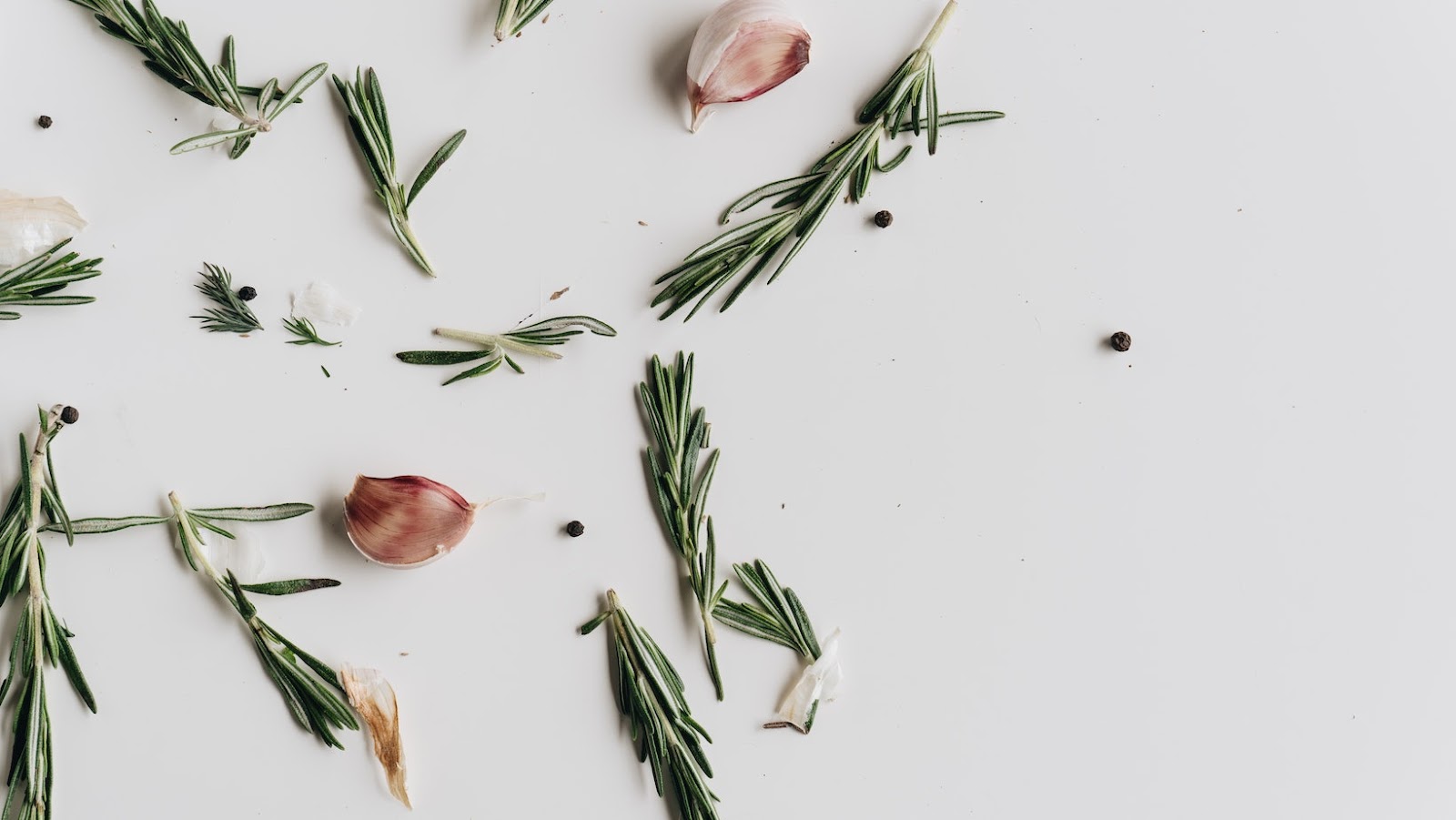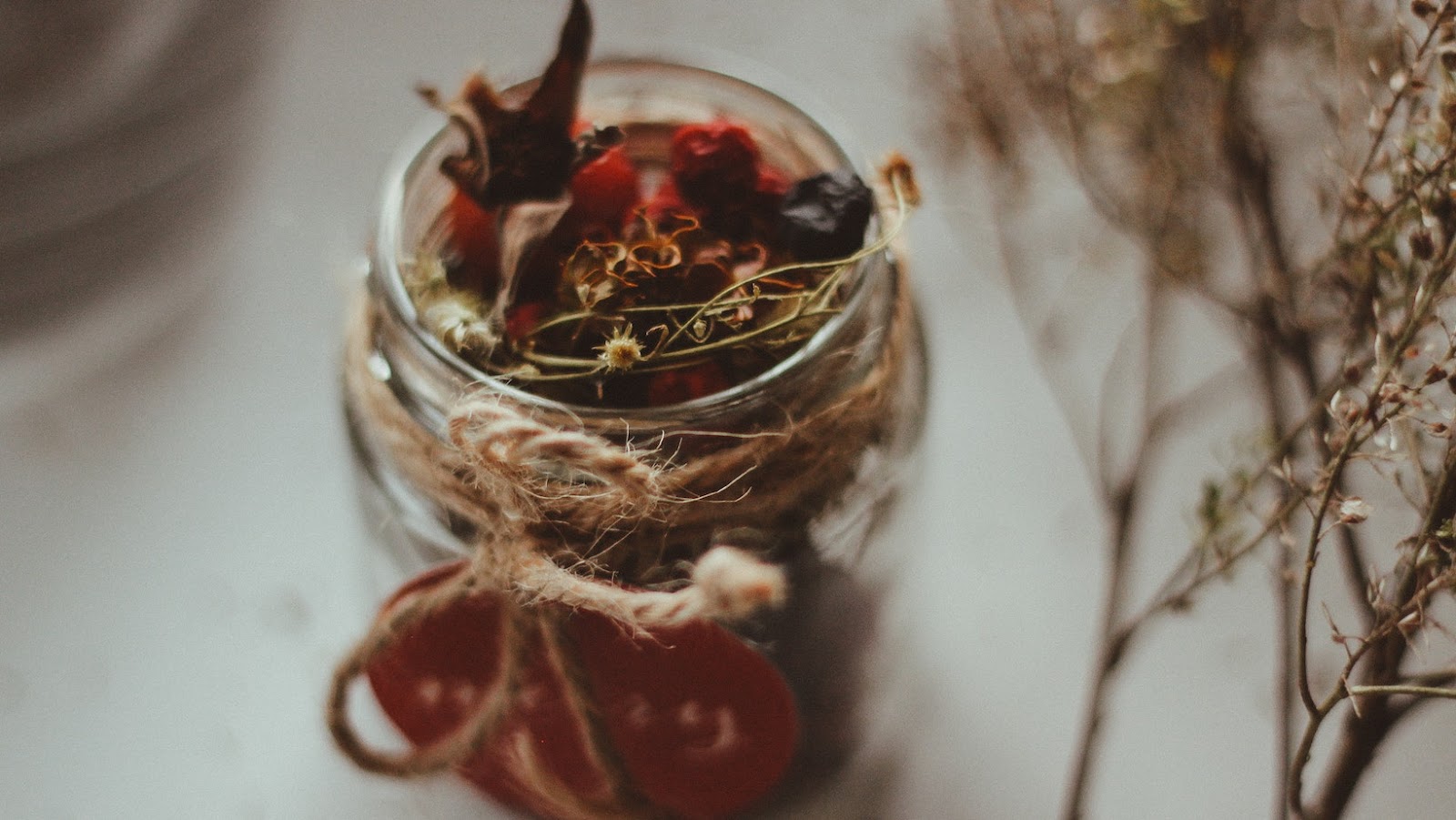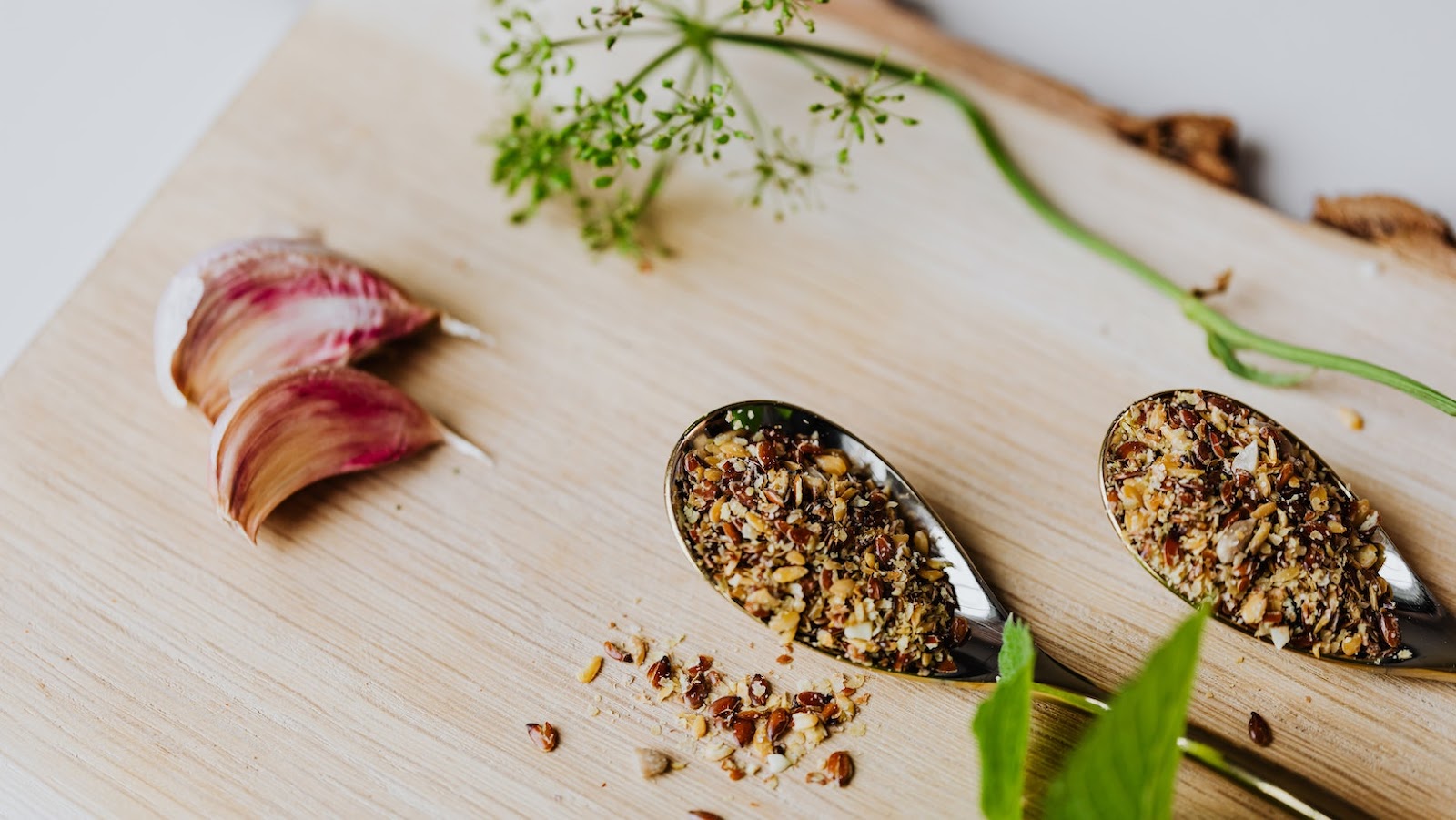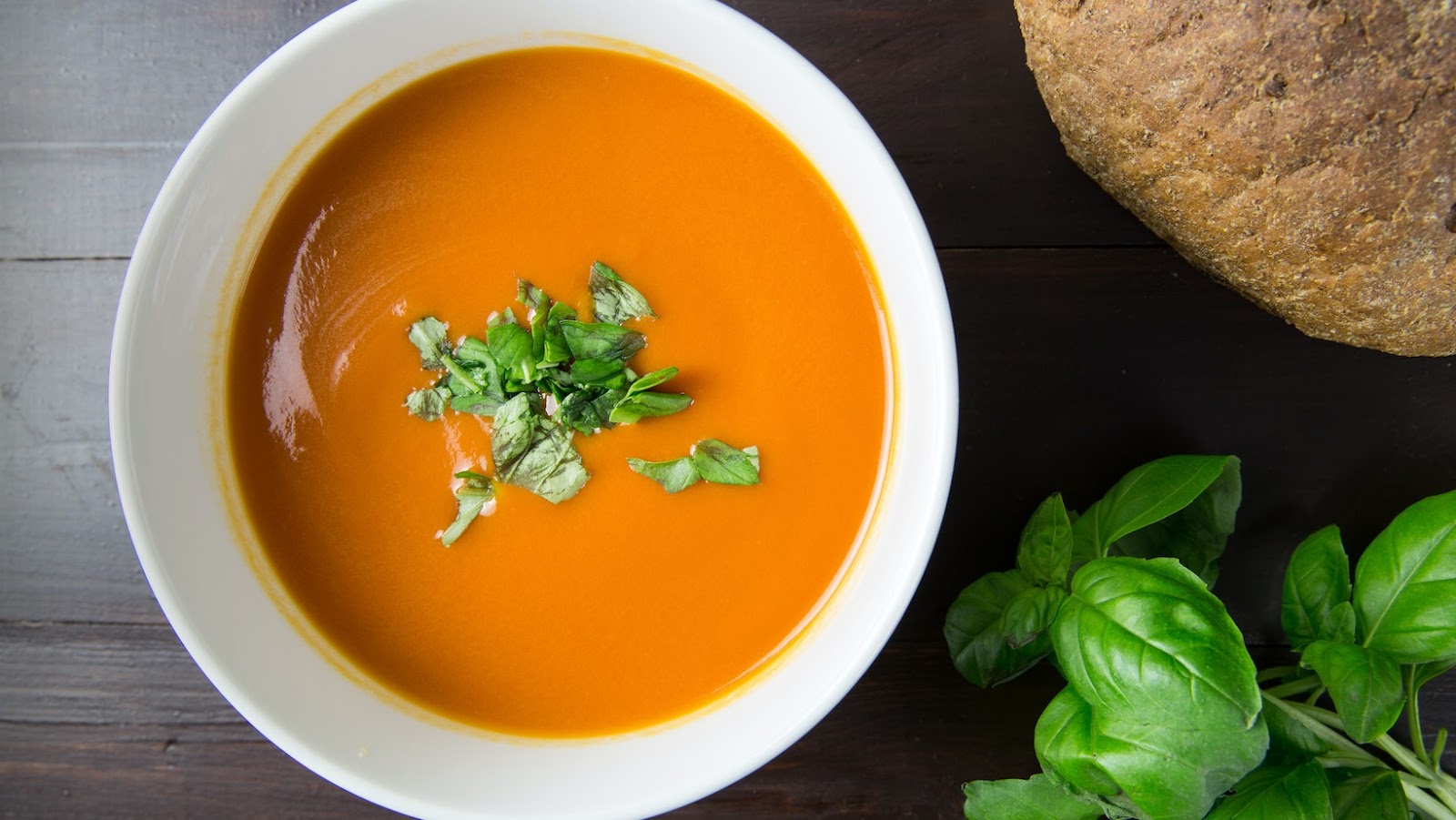To understand how to enhance your recipes with an added depth of flavor, turn your attention to the world of fine herbs. Fine herbs are widely used in French cuisine, providing a combination of vibrant fragrance and flavor to dishes. In this section, we’ll discuss the definition of fine herbs, their significance, and their ultimate advantage in your dishes.
Definition of Fine Herbs
Fine Herbs, or fines herbs in French cuisine, are a mix of fragrant herbs. These herbs usually include tarragon, chervil, parsley, and chives. All these are chopped finely and then blended together in equal amounts.
Adding fine herbs can boost the flavor of dishes, without overpowering the natural flavors. They bring depth and complexity to simple dishes like omelets, soups, salads, and sauces. Fine herbs are tasty and nutritious as they contain vitamins, antioxidants, and minerals good for health.
It’s important to note that fresh herbs have the strongest flavor compared to dried ones. Moreover, adding them at the end of cooking is best to maintain their delicate flavors. Trying different combinations of fine herbs can lead to new flavor profiles which can impress anyone.
Adding fine herbs to your meals is an effortless way to improve your culinary experience. Whether you are an experienced chef or an amateur cook, using fine herbs can convert any ordinary dish into restaurant-grade food. In addition, adding fine herbs to your recipes boosts your hipster cred by 100 points!
Benefits of Using Fine Herbs in Recipes
Fine herbs are a great way to add flavour and nutrition to your cooking. They take dishes to the next level and make other ingredients taste better. Here are some of their benefits:
- Fine herbs like chives, tarragon, parsley and chervil contain vitamins and minerals.
- They add a unique aroma and flavour to soups, stews or sauces without adding calories.
- They also help with digestion and can be used in low-salt diets.
- Studies show that fine herbs can improve mood and reduce anxiety.
You should try to use fresh herbs where possible, as dried herbs may not contain as many nutrients. However, growing them at home is easy and they bring unique flavours. In addition, ancient Greeks believed that eating herbs cleansed the palate. To this day, dishes made with fine herbs remain popular due to their amazing flavour. So why not add some to your cooking and spice up your meals?
Most Common Types of Fine Herbs
To learn about the most common types of fine herbs, turn your attention to this section titled “Most Common Types of Fine Herbs”. This section will introduce you to the sub-sections containing information about each herb: parsley, chives, tarragon, and chervil. Discover each herb’s unique characteristics and flavors, and how you can incorporate them into your recipes.
Parsley
Parsley belongs to the Apiaceae family and is native to the Mediterranean. It comes in two types: curly-leaf and Italian flat-leaf. It’s a great source of vitamins A, C, and K, minerals such as iron and potassium.
Parsley has many benefits, like reducing inflammation, improving digestion and lowering blood pressure. Plus, it has been historically associated with death! Ancient Greeks thought it sprang from the blood of heroes, while Romans thought it grew where innocent people had been executed.
This chef I once knew swore by Parsley’s ability to freshen one’s breath after eating garlicky or oniony meals. For that reason, he’d always add a handful of fresh parsley to his dish. Chives are for when you want your food to apologize for being bland.
Chives
Chives have slender green leaves that grow in bunches. Their flowers, with a mild purple hue, blossom in late spring or early summer. It is easy to cultivate and requires minimal attention – making it an ideal choice for home gardeners.
Chives are abundant in vitamins A & C, plus minerals such as calcium and potassium. Due to its subtle flavor, it’s best to use chives fresh rather than dried. Store them in a plastic bag in the fridge to maintain their freshness.
Surprisingly, chives are thought to possess therapeutic benefits, like antibacterial and anti-inflammatory characteristics – though more research is needed to confirm these claims. In addition, according to the American Chemical Society’s Journal of Agricultural and Food Chemistry, chives contain compounds that could help reduce cancer risk.
Tarragon, which may sound like an invented herb from a fairy tale, is a key component in many French dishes.

Tarragon
Tarragon is an herb with many benefits! It has a scientific name of Artemisia dracunculus and belongs to the Asteraceae family. It originated in Central Asia and is highly valued for its culinary uses, such as enhancing the flavor of chicken, seafood, egg dishes, and sauces.
It has medicinal properties, including aiding digestion and relieving toothache pain. It’s best to use fresh tarragon when possible to gain all the health benefits of it.
On the other hand, Chervil is like parsley’s French cousin but without the snooty attitude!
Chervil
Chervil’s leaves are feathery and bright green. It has a subtle licorice flavor. People commonly use it in soups, sauces, and egg dishes.
Mixing it with other herbs like parsley, tarragon, and chives creates ‘fines herbes’. Outside of Europe, it can be hard to find fresh, but it’s readily available dried. It’s known for its high levels of antioxidants.
Interestingly, people once believed that Chervil had medicinal properties. They used it to treat eye diseases.
If you want to wow your dinner guests, sprinkle some fine herbs on your dish. They’ll pretend to know what it is!
How to Use Fine Herbs in Your Recipes
To enhance your cooking skills with fine herbs, use our guide: How to Use Fine Herbs in Your Recipes with two key sub-sections – Adding Fresh Herbs to Your Dishes and Incorporating Dried Herbs in Your Cooking. Whether you’re looking to add flavor or texture, we’ll show you how to perfectly blend the herbs into your recipes.
Adding Fresh Herbs to Your Dishes
Liven Up Your Meals with Fine Herbs!
Fine herbs can provide your dishes with a unique flavour and vibrancy. Here are six ways to incorporate fresh herbs into your recipes:
- Employ individual herbs thoughtfully to make their flavours stand out.
- Blends such as fines herbes or bouquet garni add complexity.
- Add herbs close to the end of cooking for maximum taste.
- Chop or mince herbs before adding them to dishes.
- Steep herbs in hot water for teas, infusions, and broths.
- Pick fresh herbs from your own garden for extra freshness!
Various herbs have distinct properties, so it’s important to determine which herb is ideal for a particular recipe. Additionally, too many herbs can overpower a dish. Be conscious of the amount you use.
Fun fact: Some coriander varieties are citrusy, while others are earthy! Experts recommend researching different varieties before using coriander in recipes.
Dried herbs are like your ex – past their prime, but still useful in the kitchen.
Incorporating Dried Herbs in Your Cooking
Use dried herbs in your cooking! Here’s how:
- A little goes a long way – they are more intense than fresh herbs.
- Crush them before adding, to unlock the flavor.
- Put them in during cooking, not at the end.
- Think about the power of the herb and how much to use – and which herbs to pair it with.
- Store in air-tight containers, away from heat and light, for maximum freshness.
- Cook with garlic, onion and other aromatics to give extra depth to the flavors.
Remember: Fresh herbs are superior for subtler flavors.
Extra tip: Try out different combinations of herbs to find your own signature taste. And growing your own herbs at home is a great money-saving and impressive skill!
Tips for Growing Fine Herbs at Home
To grow fine herbs at home with the best yield, you need to follow the right tips. Choosing the right soil and climate, watering and fertilizing your herbs, and harvesting and storing your herbs can be significant factors in the growth of your herbs. Read on to learn about each of these sub-sections in detail.
Choosing the Right Soil and Climate
When cultivating herbs, it’s essential to think about the type of soil and climate. The perfect soil and climate can give herbs the best conditions for growth. A table below shows the ideal soil type and climate for various herbs.
When planting herbs, check if they prefer sandy or clay soils. Adjust the moisture level accordingly. Some herbs need more water and some are drought-tolerant. Consider the climate and pick a spot with adequate sunlight and protection from strong winds.
Many herbs can adjust to most climates if they get proper care. Don’t miss your opportunity to grow fresh herbs at home! With the right soil type and climate for your plants, you can make a suitable environment and have fresh herbs all year. Watering and fertilizing herbs is like having a pet – if you neglect them, they’ll die.

Watering and Fertilizing Your Herbs
Herbs are delicate plants. Proper care is essential – especially when it comes to watering and fertilizing. Giving your herbs the right nutrients in the right amounts is key. Here’s a three-step guide:
- Understand your herb’s water needs. Indoor herbs may need more frequent watering than outdoor ones.
- Water your herbs thoroughly. Make sure the water reaches all the roots and penetrates the soil evenly.
- Fertilize your herbs with organic soil amendments or liquid fertilizer for herbs at least every two weeks.
Also make sure your herb pot has adequate drainage. Certain herbs, like oregano and thyme, don’t need very fertile soil. Too much fertilizer can harm them.
When growing herbs, consider:
- The type of potting soil used.
- Enough daily sunshine for at least six hours.
- Avoiding overcrowding.
My friend once failed with her basil plant indoors. She was overwatering it. She changed her routine and became an experienced herb grower. She harvested and stored her herbs like a mad scientist!
Harvesting and Storing Your Herbs
Maximizing the benefits of growing herbs at home? Start by harvesting early in the morn for maximum flavor. Use sharp scissors or pruning shears to trim just above a pair of leaves. Rinse and pat dry with paper towels. Bundle loosely and tie with string or elastic band. Hang upside down in warm, dry place with good airflow. Store dried herbs in jars, bags, or canisters. Ancient Egyptians used thyme and chamomile for healing. Prepare to get your taste buds salsa dancing with these herb recipes!
Fine Herbs Recipes to Try at Home
To try out some recipes with the flavorful goodness of fine herbs, the “Fine Herbs Recipes to Try at Home” section with the Herb Salad with Lemon Vinaigrette, Roasted Tomato and Herb Bruschetta, and Lemon and Herb Baked Chicken Breast sub-sections can be the solution. These recipes will offer a fresh, zesty touch to your meals and provide the perfect balance of herbs and spices.
Herb Salad with Lemon Vinaigrette
Herb Salad with Zesty Lemon Vinaigrette – a herbaceous delight named after its tangy dressing. Perfect for a light, nourishing meal for boosting energy and immunity during summers.
This salad is full of fresh garden greens – baby spinach, shredded kale, butter lettuce, crunchy cucumbers and grape tomatoes.
To add zest, finely diced chives, dill, parsley and tarragon have been added. The lemon vinaigrette adds flavor but doesn’t overpower the fresh mint leaves.
This salad can be served as a side or turned into a full meal with Grilled Chicken breasts on top. For some added texture and taste, sprinkle croutons or nuts.
Herb Salad with Zesty Lemon Vinaigrette is a versatile recipe with balanced nutrition. A flavorful pairing of roasted tomatoes and fresh herbs on a bruschetta – Who needs a significant other?
What Are Fine Herbs
Sprinkle oregano, basil, and thyme on freshly roasted cherry tomatoes. Finely slice garlic cloves and dress them with olive oil. Top it off with chopped parsley, chives, and rosemary. For a texture change, use sourdough bread or baguette slices instead of the traditional ciabatta. To get a crunchy upgrade, crumble crispy bacon bits on the bruschetta before serving.
For even more flavor, serve it with an Italian-style Aperol Spritz cocktail. This drink’s refreshing bitterness will perfectly complement the appetizer’s tangy sweetness. Make this delicious treat in less than thirty minutes and enjoy! For something else tasty, try lemon and herb baked chicken breast. It will surely surprise you!
Lemon and Herb Baked Chicken Breast
This chicken is zesty and full of flavor – perfect for a weekday dinner! Here’s how:
- Preheat oven to 375°F.
- Clean and season chicken breasts with Herbes de Provence, salt, and pepper.
- Put the breasts in a baking dish. Drizzle lemon juice over each.
- Bake 20-25 minutes until cooked. Serve hot – garnished with fresh herbs.
Easy to make and oh-so-tasty! Shake it up with parsley or thyme, too.
It’s said Herbes de Provence was created by French farmers who’d gather herbs from their fields to use as seasoning. Now, this blend is loved around the world for its unique flavor!
Be a gourmet chef – stock up on these herbs at these stores. Dried leaves never tasted so good.

Where to Find Fine Herbs
To help you obtain fine herbs for your recipes, this section on ‘Where to Find Fine Herbs’ with sub-sections of ‘Grocery Stores and Farmer’s Markets’ and ‘Online Herb Retailers’ gives you the solutions.
Grocery Stores and Farmer’s Markets
Grocery stores and farmers’ markets are two great places to find herbs. You can find basil, thyme, and mint in the produce section or spice aisle of grocery stores. At farmers’ markets, you can buy seasonal herbs directly from local farms. Here is a table to show the advantages of each:
Assorted Herbs all year round Fresh produce directly from local farms.
Variety of herb options Opportunity to meet with passionate growers.
Conveniently located Supporting small farms in the community.
Keep in mind that smaller grocery stores may not have as many herbs as larger chains. Also, check pre-packaged items for flavor before buying.
If you’re looking for edible seeds, try catalogs and nurseries. It’s best to shop seasonally, and don’t buy small plastic containers for short-term use. Buying herbs in bulk may be cost-effective if you’re making a large spread.
No matter where you source your herbs, they’ll always improve your recipes! Enjoy high-quality herbs without leaving the house – just don’t get too comfortable!
Online Herb Retailers
Online Herb Providers are plentiful. Here are some suggested online marketplaces for purchasing your herbs:
- HerbCo – Organic herbs.
- Mountain Rose Herbs – Fair trade, high-quality loose herbs.
- The Tea Spot – Handcrafted tea blends, including herbal infusions.
- Dry Goods USA – Dried and fresh, harvested seasonally from their farm.
Delivery procedures must be taken into consideration. The best retailers use recyclable materials to protect the environment. Research the appropriate retailer according to your needs and location. Don’t settle for low-quality. Purchase from reputable sources that offer excellent customer service.
Reap the benefits of fine herbs. Elevate your cooking game with quality herbs. Bland food isn’t an option – unless you’re a serial killer!
Conclusion: Elevate Your Cooking with Fine Herbs
Delicious herbs can take your meals to the next level. They can bring flavor, aroma, and vibrancy to your dishes. Consider the following when cooking with herbs:
- Parsley, chervil, tarragon and chives are popular French herbs.
- These herbs add a fresh finish to soups, salads, sauces, and dressings.
- Add them at the last minute of cooking or as a final garnish for best results.
- Keep them fresh by wrapping in damp paper towels or putting in water.
Did you know that herbs have been used since ancient times? During the Middle Ages, they were steeped in wine or vinegar-honey mixtures before being added to dishes. This history adds a special touch to our eating experiences today.

